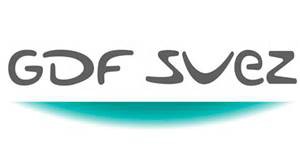 2015 CWDI Report:
2015 CWDI Report:
Women Board Directors of the Fortune Global 200 — 2004-2014
The 2015 CWDI Report on Women Board Directors focuses on the women board directors on companies within the top-ranking Fortune 200 company listing. The study found that women held 17.8% of board seats in companies represented on the Fortune 200.
Key Findings
For the 200 largest companies in the world, there has been little progress in increasing the percentage of women on boards globally this past decade.
- From 2004 – 2014, the percentage of women board directors has increased only 7.4% — less than 1% annually — from 10.4% in 2004 to 17.8% in 2014.
U.S. has lost its lead role in appointing women to board seats to Europe.
- In 2004, 20 of 27 best performing companies were U.S.-based.
- In 2014, 17 of 25 companies with the best percentages of women directors are based in Europe, with U.S. companies reduced to only 7 in the Top Ten listing.
Europe’s numbers of women directors have ticked upwards only because of proactive laws mandating quotas or private sector initiatives to accelerate board diversity.
- Since 2004, the number of countries with legislative quotas for publicly-listed or state-owned companies has increased from 7 to 24 in 2014.
- During the same time period, the number of countries (which have amended their corporate governance codes requiring or recommending board or gender diversity on boards) has increased from 4 to 26.
Quotas are working to accelerate women’s access to board seats.
- Fortune Global 200 companies based in countries with quotas averaged 25.3% women’s representation on boards compared to 15.6% in countries without quotas.
- In 2014, the Top Three countries with the highest percentage of women board directors all have legislative quotas. France leads with 30.2% from 7.2% in 2004; Italy follows with 25.8% from 1.9% in 2004; and the Netherlands ranks third with 23.6% women-held board seats from 8.6% in 2004.
Inclusion of gender diversity language in corporate governance codes is also effective.
- Fortune Global 200 companies based in countries with gender diversity provisions in corporate governance codes averaged 24.2% women directors while companies based in countries without those guidelines had only 13.6% women-held board seats.
- Best performers include the U.K. whose strictly voluntary goal of 25% women’s board representation was based in gender diversity commitments imbedded in a revised corporate governance code resulting in 23.2% women-held board seats in FTSE 100 companies.
- Finland made gender diversity a requirement instead of a recommendation in their code and now all their blue-chip companies have 30% women’s representation. Australia’s Stock Exchangemade disclosure of gender diversity at all levels of a company a listing requirement resulting in 19.4% women directors, up from 8.2% in 2004.
The three largest economies in the world – U.S., China and Japan – have no national initiative to increase women’s board representation.
- From 2004-2014, all three countries posted the lowest rates of increase in the percentage of women directors:U.S. at 4.9%, China at 3.6% and Japan at 4.5%. European countries’ rates of increase averaged 16%, with Italy posting the highest rate of change at 24%.
The majority of companies with all-male boards are based primarily in the Asia-Pacific region.
- 16 of China’s 28 largest companies in the Fortune Global 200 do not have a single women director.
- Japan and South Korea still have minimal women’s presence on their boards, despite some recent improvements.
POSITIVE TRENDS: 2004-2014
Overall, more companies are adding at least 1 woman board director.
- From 2004 to 2014, the number of the 200 largest companies with at least 1 woman
director increased from 144 to 166.The majority of the increase has occurred since
2013 with 13 companies adding a woman director in 2013 or 2014.
More companies are reaching “critical mass” and most of those companies are European.
- From 2004 to 2014, the number of companies with 3 or more women directors has increased from 37 to 80. 40% of the 200 largest companies now have a “critical mass” of women directors.
- In 2004, the majority (24 of 37) of the companies with 3 or more directors were based in the US. Now, the majority (49 of 80) of the companies with 3 or more directors are based in Europe.
Outside of the three largest economies, more and more countries are taking steps to improve women’s board representation through legislative mandates or private sector efforts.
Sponsored By:
 To order a copy of the 2015 CWDI Report on Women Directors of the Fortune Global 200: 2004-2014
To order a copy of the 2015 CWDI Report on Women Directors of the Fortune Global 200: 2004-2014
please click here
